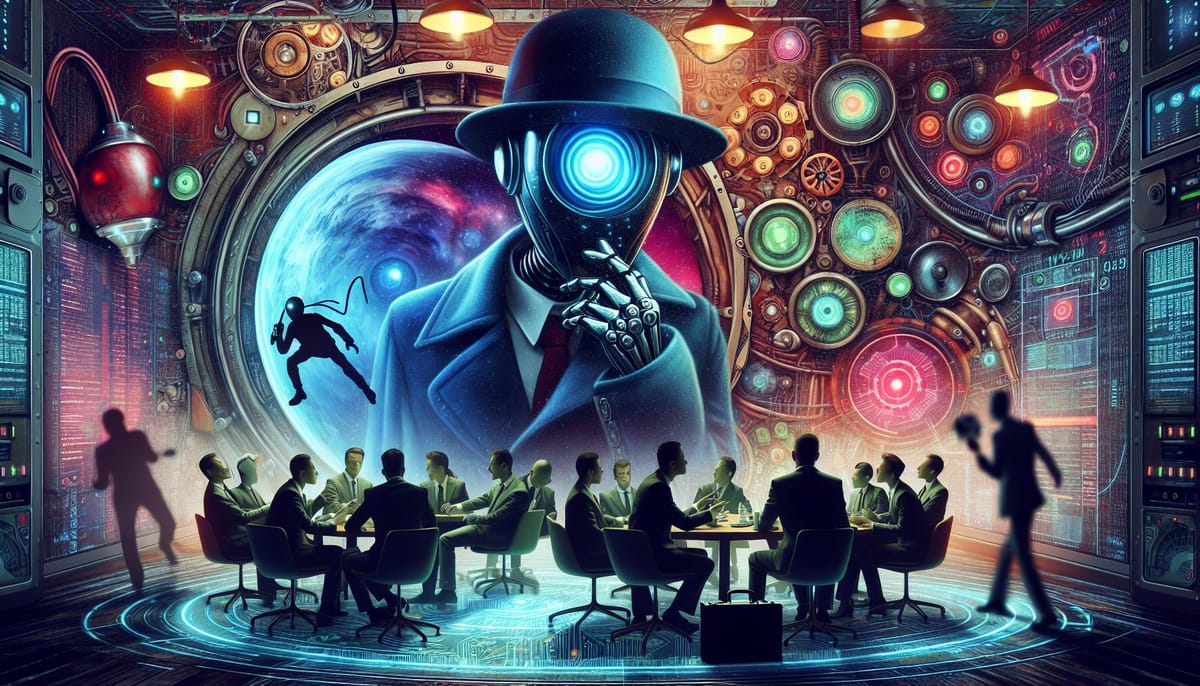The Mystery of "GPT2-Chatbot": A Potential Glimpse into the Future of AI?

In the ever-evolving landscape of artificial intelligence, a recent development on the Chatbot Arena platform has ignited a flurry of speculation and curiosity within the AI community. A mysterious model dubbed "GPT2-Chatbot" appeared on the platform, only to be swiftly removed, leaving users puzzled and eager to unravel the enigma behind its brief presence. This incident has reignited discussions about the rapid pace of advancement in AI technology and the ethical considerations that must accompany such progress.
The Chatbot Arena Incident Uncovered
The Chatbot Arena, a well-known platform for evaluating and ranking language models, found itself at the center of this intriguing incident. According to multiple reports from users who had the opportunity to interact with the "GPT2-Chatbot" model, it exhibited remarkable capabilities, outperforming the current state-of-the-art models in several domains, including reasoning, writing, and even generating creative horror fiction.
User testimonies painted a picture of a model that seemed to be a significant leap forward in terms of performance and human-like responses. Some users even speculated that this mysterious model might be an early glimpse into the much-anticipated GPT-4.5 or GPT-5 models from OpenAI, while others believed it could be an entirely new iteration altogether, potentially representing a breakthrough in language model development.
The OpenAI Connection and Fueled Speculation
Adding fuel to the fire of speculation, Sam Altman, the CEO of OpenAI, the company behind the renowned GPT (Generative Pre-trained Transformer) series of language models, cryptically tweeted about having a "soft spot for GPT-2." This seemingly innocuous tweet further fueled the speculation surrounding the model's origins and its potential connection to the acclaimed GPT series, which has been at the forefront of natural language processing advancements.
While the reasons behind the model's sudden disappearance from the Chatbot Arena platform remain unclear, several theories have emerged within the AI community. Some suggest that it was an accidental leak or a controlled test run that garnered more attention than intended, leading to its swift removal. Others speculate that the model was removed due to policy changes or concerns about its potential implications, both in terms of technological capabilities and ethical considerations.
Implications and the Need for Responsible Development
Regardless of the underlying reasons, the brief appearance of "GPT2-Chatbot" has reignited discussions about the rapid pace of advancement in AI technology and the ethical considerations that must accompany such progress. As researchers and developers continue to push the boundaries of what is possible, incidents like this serve as a reminder of the need for transparency, accountability, and responsible development practices in the AI space.
The potential implications of a language model that can outperform current state-of-the-art systems in various domains are vast and far-reaching. While such advancements hold immense promise for fields like natural language processing, content generation, and even creative endeavors, they also raise concerns about potential misuse, bias, and the overall impact on society.
The Path Ahead and the Pursuit of Understanding
As the AI community eagerly awaits further revelations or official statements that might shed light on the true nature of "GPT2-Chatbot" and its potential impact on the future of artificial intelligence, the mystery remains. This incident has fueled speculation and ignited the imaginations of those who envision a world where superintelligent AI systems become a reality, offering both exciting possibilities and daunting challenges.
The pursuit of understanding and harnessing the power of artificial intelligence must be accompanied by a commitment to ethical and responsible development practices. Only through a collaborative effort involving researchers, developers, policymakers, and the broader public can we navigate the complexities of AI advancement while mitigating potential risks and ensuring that these technologies truly benefit humanity.
In the wake of the "GPT2-Chatbot" incident, the AI community finds itself at a crossroads, balancing the allure of groundbreaking advancements with the need for caution and foresight. As we collectively strive to unlock the full potential of artificial intelligence, it is essential to approach this endeavor with open dialogue, transparency, and a shared vision for a future where technology and ethics coexist harmoniously.